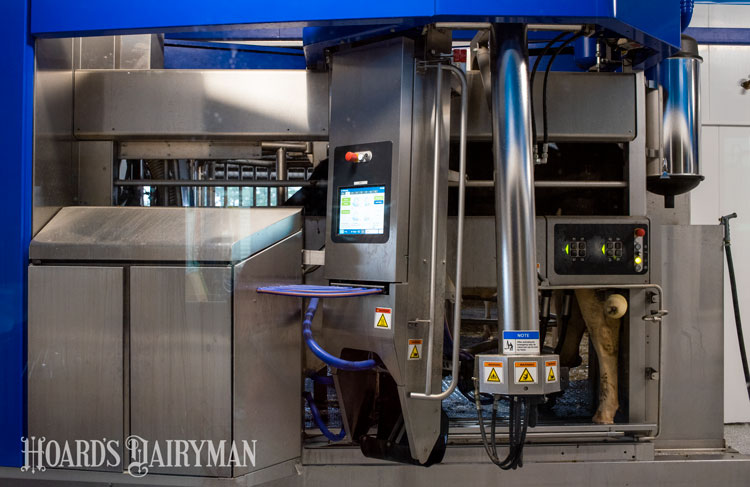
Transition cows can be a challenge when it comes to balancing energy and nutrition. Most often, the cow ends up in a negative energy and nutrient balance. When that happens, the cow will lose weight and be more susceptible to metabolic issues. Ryan Pralle spoke on a University of Wisconsin Division of Extension Badger Dairy Insight webinar about how milking frequency can affect negative energy balance during transition.
When milking frequency goes from twice per day to three times per day, farms can often see a 20% jump in milk production. Early lactation cows see the greatest benefit here, and even when they are only milked more frequently during early lactation, they will still see the benefits carried out into mid- and late lactation.
Pralle, an associate professor of animal, dairy, and vet sciences at the University of Wisconsin-Platteville, wanted to study if the greater milk yield from increased milking frequency also resulted in a greater risk for metabolic issues. He performed a study on 16 multiparous cows in an automated milking system (AMS). These cows were measured from four to 29 days in milk, and they scheduled half for 6x milking and half for 3x milking. The pellet that was offered was controlled for the first 29 days with all cows receiving the same amount depending on their days in milk. After the first 29 days, pellets were based off milk production.
They found that after the 29 days, there was no significant difference in voluntary visits to be milked. They also found that there was no major difference in milk yield between the two groups in the first 29 days; however, in the carryover period from 29 days to 90 days, there was a 22-pound advantage per day in cows that were milked 6x in early lactation. The 6x group also had higher fat corrected milk production in the first 30 days.
That posed the question: Are these cows using more body fat reserves toward production? Blood test results showed they likely did. The cows milked more frequently had higher ketone body concentrations, pointing toward greater risk of metabolic issues. Pralle mentioned that when they broke second lactation cows out from third lactation or older cows, the second lactation cows didn’t show a difference on fat corrected milk, so this seems to have a greater effect on older cows.
From their findings in this study, Pralle shared two recommendations. First, in an AMS setting, mature cows may need a higher pellet rate to meet their energy needs. Second, he said it may be beneficial to limit milkings per day in older fresh cows to protect their metabolic health.








